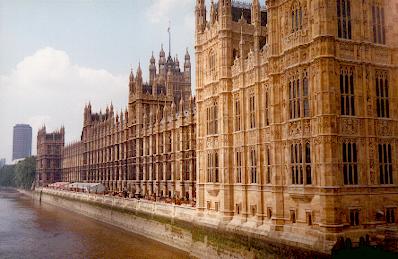77: UK Market Update and Economic Trends
07-29-2006
There are mixed signals with regard to the UK housing market. It seems when interest rates rose 0.25% mid 2005, many people put off buying a property half expecting prices to dip. By end 2005 it became evident that prices in
1) Housing shortage only 190,000 homes are being built in the
2) Second Homes Growth many wealthy middle income individuals have released equity to buy second homes this has reduced the number of homes available for local populations particularly in London, Wales, Cumbria and southern England (Cornwall and the Isles of Scilly are extreme examples). Some of these second homes, particularly in
3) Unemployment this has staying relatively low. There has been a massive increase in employment in northern
4) Interest Rates the last house price crash occurred in 1990 when interest rates rocketed from 7% to 15% and unemployment almost doubled. Now interest rates are 4.5%. Although affordability for many is stretched, we are far more sensitive to small increases in interest rates though overall interest rates remain relatively low.
Meanwhile, John Prescotts ideas of creating grand housing development corridors along the M11, M4 and A2 are falling predictably into disrepute this will likely exacerbate the housing shortage as builder struggle to find land to build on, and cram ever increasing amounts of small flat into brownfield sites (note: the average UK citizen wants to live in a modest detached house but only 15% of properties built are now houses with garages and a garden dont be surprised if detached house prices continue to increase, particularly those with a garage, off street parking and a reasonable sized garden.
This is all history - though it sets a trend. But what about the future?


Is confidence rising?
Much depends on inflation will it get out of hand? There are signs that inflation may be heading from 2.5% towards 3% which is very uncomfortable for the Bank of England. The immigration has helped keep wage inflation relatively low at about 4% and this looks likely to continue. However, if inflation rises about say 2.8%, interest rates could go up to a least 5% and this would squeeze many home owners and could precipitate a housing price correction. Because of the housing shortage and robust economy, we may escape a crash. Debt levels are high and many people have overextended themselves, but the amount of unsecured loans has recently dropped, credit card loans have also dropped and savings have increased in the last year. Its likely many people who own homes have got the message to go easy on their finances. Equity release has helped many home owners to stay in financially good shape. So its quite possible house prices could keep rising in years to come research from Oxford Economic Forecasting predicts prices will soar 50% by 2011.
First time buyers and key workers are a scarcity in the market and one would normally say this did not bode well for the general housing market. However, the wealthy middle aged purchasers, the influx of foreign nationals of differing wealth and the aging population buying retirement homes, plus buy-to-let investors have kept the housing market strong. The advent of SIPPs whereby a consortium of ten investors can set up a residential property portfolio REIT will also help support prices, as these become more popular. Meanwhile, equity release by parents will help their offspring get on the housing ladder and parents acting as guarantors will assist high borrowing multiple for first time buyers. The advent of 30 to 50 year interest only mortgages and part equity schemes will also help first time buyers. That said, years ago, if one came out of collage with a £1000 overdraft, you were considered a bad case. Now, students loan debts of some £15,000 before considering other unsecured loans and overdrafts - they start with a huge burden and many frankly have given up the fight to get on the housing ladder. Many stay with their parents, others rent and some enjoy themselves travelling. This is a real issue in the

Meanwhile rental demand and prices have picked up in 2006 and buy-to-let mortgages now account for 14% of property transactions in involving mortgages both signs of a relatively healthy market.
Overall, prices are high and it is conceivable (but unlikely) a crash is just around the corner. For property investors with large attractive portfolios its a time to be cautious and choosy and make sure you have plenty of cash in reserve in case things deteriorate quickly (e.g. inflation gets out of control, oil price soar or regional wars breaks out). For those with smaller portfolios or who are just starting out you need to be even more careful a good purchase price is key to lowering your risk and choosing the right property in the right area.
A few tips:
Positive Change: Purchase in an area undergoing rapid positive change examples are new stations, roads, communications, retail development, offices, jobs and wealth (e.g. London - Stratford, Gravesend, New Cross, Chiswick, White City, Kings Cross, Elephant & Castle, Dyce/Aberdeen, Plymouth).
Employment: If you can predict where unemployment is likely to drop, this will help reduce your risk. An example is researching where offices and jobs are being relocated (e.g. new BP office in Dyce Aberdeen, London-Docklands jobs expansion). Or entering a market where a few months/years ago, there were massive jobs losses but there are good indications that new jobs will be created (e.g.
Rental Demand: Choose an area popular with renters close to amenities, jobs, restaurants/cafes, cultural attractions (or beaches or coast for holiday lets). (e.g. London - Bow, Clapham, Battersea, Bayswater, Shoreditch. Borough, town and city centres). If you buy in

Babyboomers: Consider purchasing in coastal (or scenic) areas popular with relatively wealthy retiring babyboomers those of current age 44 to 61. Areas that are cheap on the coast in south facing locations are definitely worth serious consideration. Tops is probably Cornwall, where there is projected to be a population explosion in the next 10 years an extra 200,000 people added to the current 550,000 population lower priced resorts are particularly attractive e.g. Portreath, Newquay, Perranporth, Porthleven and St Just. Because there is almost no new building in

Finally, PropertyInvesting.net favour investments in London and southern
There appears to be a two speed

